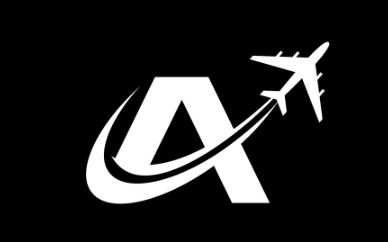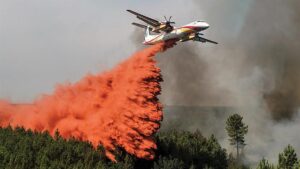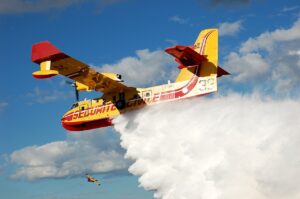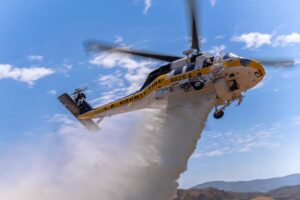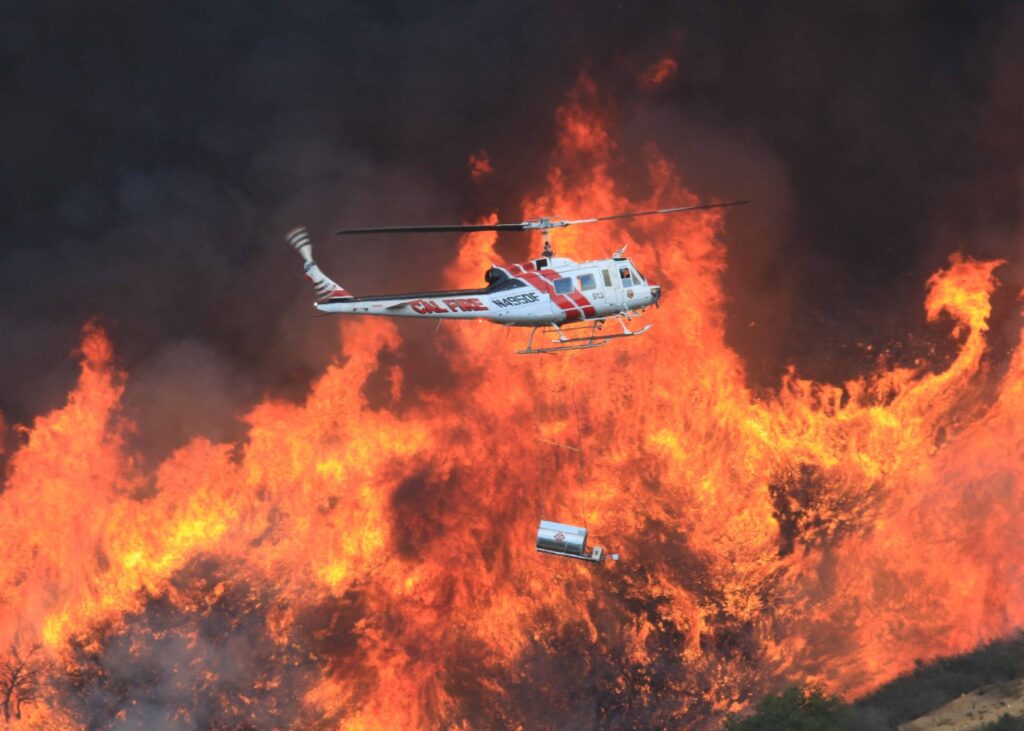
BY JEN NEVANS | APRIL 6, 2023
Aerial firefighters in the Golden State face a year-round fire season. One of the tools at Cal Fire’s disposal in combating their spread and severity is a prescribed burn. This form of precision landscaping is carefully planned through the department’s vegetation management program (VMP) to clear excess brush in areas naturally prone to wildfire — essentially reducing the fuel that would otherwise feed an uncontrolled blaze. It leaves a gap in the vegetation that acts as a barrier to slow the progress of a wildfire.
While prescribed burns can take place year-round based on landowners’ needs and recommendations from Cal Fire’s subject matter experts, they’re more commonly carried out during a small burn window in the fall. This is when fuel moisture and other conditions are just right, Ginger Haight, unit environmental scientist at Cal Fire, told Vertical.
In October 2022, one of the organization’s Bell UH-1H Super Hueys was tasked with carrying out a firing operation in the Gabilan Range in Salinas. Mounted with an aerial tool known as a helitorch, the Super Huey dropped ignited lumps of gelled fuel (using Flash 21 liquid fuel gelling agent) along the side the mountain, leaving behind a line of fire.
Haight describes the helitorch as a great tool to use on rugged terrain that might be difficult for ground crews to reach, and it also serves to quickly ignite vegetation.
“It speeds up the burning process,” she said. “Since we’re burning in October and November, typically for that kind of fuel type, our burn window is very narrow. We pretty much only get a few days within the month, and then there’s only five to six hours within that day that we can accomplish our burn.”
On standby was the department’s newest addition to the air force — a Sikorsky S70i Cal Fire Hawk. Loaded with 1,000 US gallons (3,785 liters) of water, the Fire Hawk was ready to extinguish any slop-overs — that is, fire that crosses a control line intended to confine the blaze within the prescribed burn plot.

Meanwhile, more than 100 firefighters were on the ground helping to carry out the planned burn, including at least 10 fire engines, three hand crews and two dozers. The mission was completed over three days, burning approximately 3,000 acres broken up into three blocks.
Mimicking a natural wildfire, these prescribed burns work to reduce the severity and frequency of destructive fires. They also optimize soil and water productivity, and improve wildlife habitat and biodiversity.
In 2021, California firefighters battled nearly 7,400 fires that burned more than 2.6 million acres, resulting in three deaths and more than 3,800 properties damaged or destroyed. But none of those incidents were as devastating as the “Camp Fire” of 2018, named after Camp Creek Road where the wildfire started in Butte County.
With 85 civilian fatalities, more than 18,800 structures destroyed, and more than 153,300 acres burned, the Camp Fire is considered to be the deadliest and most destructive in California history. Investigators narrowed down the cause of the fire to electrical transmission lines owned and operated by Pacific Gas and Electricity (PG&E). The dry vegetation, coupled with strong winds, low humidity and warm temperatures, was believed to be the catalyst behind the deadly fire’s rapid spread.
With a mission to prevent such a destructive fire from happening again, Cal Fire ramped up its fuel reduction efforts through its VMP, carrying out prescribed burns that are carefully planned based on weather patterns, fuel moisture and wind direction. With 2.2 million acres in San Benito and Monterey counties, this crucial program works to create a defensible space between a potential wildfire and private property.
Cal Fire also teamed up with researchers from the Wildfire Interdisciplinary Research Center at San Jose State University (SJSU) to study the third block of the October 2022 prescribed burn. Haight said researchers were on site to “investigate the physics and meteorological aspects of explosive fire growth in canyon topography. The experimental design focused on allowing a head fire to propagate freely from the bottom of the canyon to the top.”

Using a combination of helicopter and drone infrared (IR) imagery, researchers collected data for high-resolution fire front evolution and fire perimeters. The helicopter flew at 1,200 feet (365 meters) above ground level (AGL) and carried the SJSU wildfire imaging system. Meanwhile, the drone flew below 350 ft. (106 m) AGL and carried a special IR camera supplied by researchers from the University of Melbourne in Australia.
Haight said the research team gained new observations and data on canyon fire spread, improved understanding on fire spread mechanisms in canyon topography, and new and comprehensive data for fire behavior model testing and evaluation, which will become an international benchmark to test all fire behavior prediction systems.
In addition, “instruments were placed on the PG&E poles supplied by Stella-Jones Corp. to test fire proofing materials for utility poles,” Haight said. “These instruments measured turbulence and heat fluxes of the fire as the fire spreads past the towers.”
For Cal Fire, the data from the study is expected to give them insight into how they can better protect firefighters and forecast future fire risk, fire progression, and smoke dispersion.
A powerful firefighting air force
Cal Fire’s air force consists of more than 60 fixed- and rotary-wing aircraft, making it one of the largest civil aerial firefighting fleets in the world. The aircraft are strategically located throughout the state — at its 14 air tanker bases, 10 Cal Fire helitack bases and one Cal Fire/San Diego County Sheriff helitack base.
The department’s helicopter fleet includes five Bell UH-1H Super Hueys, which will eventually be replaced with an incoming fleet of up to 12 Sikorsky S70i Cal Fire Hawks — 10 of which are already in service. Expected to bring enhanced capabilities, including flight safety, higher payloads, increased power margins, and night flying capabilities, the Fire Hawks are built specifically for Cal Fire, and completed by United Rotorcraft in Englewood, Colorado.
With its 1,000-US gallon fixed tank with pilot-controlled drop volumes, the Fire Hawks have the ability to carry nearly three times more water or foam than the Super Hueys. And unlike the Super Hueys, which are not always configured for air rescue, the new Fire Hawks have a rescue hoist system that is “built-in and always ready to deploy,” said Haight. “[It] can transition to different mission requirements on the fly.”
On the fixed-wing side, Cal Fire’s fleet includes 23 Grumman S-2T air tankers and 16 OV-10 Bronco air tactical aircraft. Cal Fire expects to welcome seven Lockheed Martin C-130H Hercules air tankers in the future.
SOURCE: https://verticalmag.com/features/raining-down-fire/
